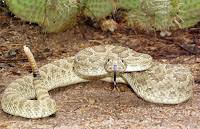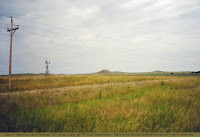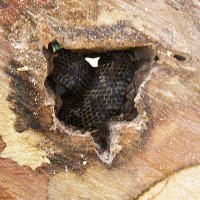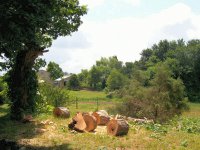Native snake of the Nebraska Sandhills
When I was a child on the ranch in the Sandhills, the three snakes we saw most often were
garter snakes,
bull snakes, and sand adders.
In the previous sentence, I linked the words "bull snakes" and "garter snakes" to photographs, but I didn't link "sand adder" because I've never been completely sure what sand adders are!
Toad Eaters
Apparently, "sand adder" is a local name for the snake. A Google search for "'sand adder' Nebraska" has only
one result -- Shirley Baker Jipp's mention of the sand adder in the
online sample chapter from her book,
Sand Beneath My Shoes. "Occasionally a saucy, brown sand-adder, gliding through the sandy path, startled us."
After reading about and looking at snakes on the internet this evening, I suspect that the sand adder was a
hognose snake. The size, coloration and markings of the hognose are compatible with the sand adder.
I found several types of hognose snakes mentioned as residents of Nebraska --
plains hognose,
western hognose, and
eastern hognose. They are all fairly similar in appearance, and apparently all of them like sandy areas.
One other reason that I believe the sand adder was a hognose snake is that hognoses eat amphibians, especially toads. I remember several times finding a sand adder in the process of consuming some poor toad.
My mother was always very fond of the toads in her garden, and she once killed a sand adder with her hoe because he was eating one of them. I don't know what happened to the toad. I hope he survived!
Hognoses have an upturned upper lip which is the surefire identifying characteristic of this snake. I never looked closely enough at a sand adder's mouth to know if its upper lip was curled or not.
Dangerous As They Look?
Many Sandhill folk believed that sand adders were poisonous snakes, or at least had heard that they were poisonous and weren't taking any chances to disprove the rumor. As children, we certainly believed they were poisonous, and a few years ago, I mentioned sand adders to my Sandhills friend, Sammie, and she too had grown up thinking they were poisonous.
Despite our fear of the sand adder, I've never seen it listed as one of Nebraska's poisonous snakes. But after researching them this evening, I understand why sand adders (which were probably hognoses) were widely rumored to be poisonous.
The
Fort Riley (KS) Army website notes, "These snakes have an interesting defense mechanism. When threatened, they will first hiss loudly and flatten their hood similar to a cobra. If that doesn't work, they will then regurgitate food, roll over and play dead."
The
Audubon Magazine gives more detail:
It is probably no coincidence that the eastern hognose sometimes resembles the timber rattlesnake, while the western hognose appears to be modeled after the prairie rattlesnake.
Also known as "puff adders" and "blow vipers," hognose snakes respond to perceived threats by coiling and rattling their tails against leaves or grass, puffing up their bodies and flattening their necks, hissing and striking (though almost never biting).
If this fails, they roll on their backs and feign death, sometimes emitting drops of blood from gaping mouths and cloacae. Turn a "dead" hognose on its stomach and it will roll over on its back again.
The nonvenomous hognose lacks fangs, but it has enlarged rear teeth, perhaps designed to puncture toads that have inflated themselves as a means of defense.
I never threatened a sand adder, so it never had to go into the radical Phase 2 behavior with me. Phase 1 was enough to send me speeding away.
Trailquest.net comments that the easiest way to distinguish between the eastern hognose and a cottonmouth moccasin is the hognose's upturned lip. Apparently they look a lot alike, otherwise.
The University of Nebraska's website, "
Poisonous Snakes in Nebraska," urges caution of snakes with a triangular head that is larger than the neck, then comments, "However, several other snakes, including garter snakes, hognose snakes, and bullsnakes may also display this characteristic, especially when alarmed."
Reasonable Caution
All in all, it's not surprising if Sandhill folks thought the sand adder (hognose?) might be poisonous. Our parents and grandparents wisely passed on to us a message of caution that they had heard in their own childhood days about this little snake.
I was an adult before I had a flash of insight one day and realized that the name of the snake was "sand adder" not "san-dadder" as I had always heard, pronounced and visualized the word. Now it seems I must admit that they weren't even poisonous. Somehow, I'm a bit disappointed.
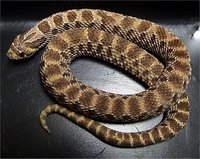

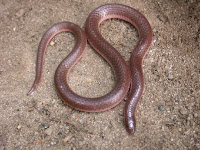
 One more garter snake story -- also from my childhood in Nebraska. When I was about ten, my parents installed a new furnace. The furnace heated the house by running hot water through baseboard radiators and through coils under the floor.
One more garter snake story -- also from my childhood in Nebraska. When I was about ten, my parents installed a new furnace. The furnace heated the house by running hot water through baseboard radiators and through coils under the floor.